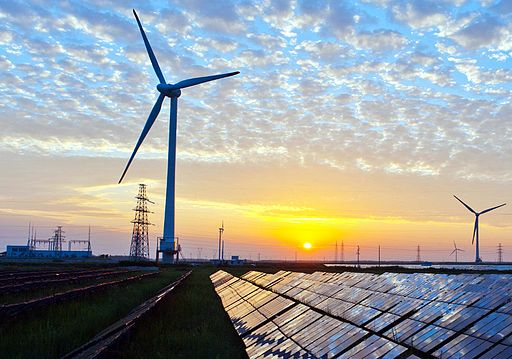
As a PhD student, only reading books about your research topic sometimes gets tedious. From time to time, I enjoy getting my nose out of academic literature and picking up books from other genres. Recently, I got my hands on “Factfulness: Ten Reasons We’re Wrong About the World – and Why Things Are Better Than You Think” by Hans Rosling. The premise of this extremely popular book was highly interesting as Rosling promised to expose all the things about the world that we’re commonly mistaken about. What could be more important at a time when our society is permeated with “alternative facts” and “fake news” in almost every sector from medicine and healthcare to climate and energy?
However, confusion quickly arose as Rosling started out by showing how facts and statistics can be collected, visualized and interpreted in many different and often manipulative ways; and then concluded that only he had the “right facts” and everyone else was wrong. It appeared straight away that Rosling didn’t seem to have a good grasp of the philosophy of science, otherwise he would have refrained from such claims. The rest of the book was then devoted to Rosling trying to convince the reader how he was right about everything and how the news media was guilty of making it seem otherwise. This was all the more surprising considering that he dedicated a whole chapter in his book to the falsity of attributing blame for a problem to a single cause.
The single or limited perspective instinct points to Rosling’s lack of system thinking: another vice he advised the reader against, but that was nevertheless prevalent throughout the book. In every chapter, Rosling presented a myriad of cherry-picked statistical trends that showed how the world had made progress along with a few passing examples to the contrary here and there. The problem was that he didn’t seem to care too much about sketching out the underlying logical links between the statistical trends. Being trained as a statistician, he fell prey to the common urge for empirical description while underestimating the need for logical and theoretical models to make sense of the statistics [1]. As such, the book unfortunately reminded me of the phrase popularised by Mark Twain (among others): “lies, damned lies, and statistics”.
Rosling’s background as a medical doctor and professor of public health had strongly shaped his belief that the world is constantly getting better. He had devoted his whole life to working in a field which had undergone mind-blowing improvements over the last few centuries. I am not in any way trying to deny that amazing progress has indeed been made in the medical sciences, healthcare and many other fields of science, technology and society. What concerned me was Rosling’s disregard to well-documented facts from fields such as environmental science or anthropology that point to the contrary, pointing to how most of the social and technological progress has come at the expense of other societies and societal groups or the natural world. Every statistic in his book about rising incomes and falling child mortality could be countered with data about spiking polluting and collapsing ecosystems as a consequence of overconsumption and overpopulation. A remarkable example was provided in Chapter 3 in which Rosling claimed that the decline in births per woman would even out population growth by the end of the century, thus bringing human population into balance with nature again, without in any way addressing the question whether our planet could actually support 11 billion people with constantly rising desires for consumption. In Chapter 10, Rosling dismissed the idea of climate refugees simply because he wasn’t aware of any connection between climate change and migration. I doubt that his colleagues in the environmental science department would agree with these “facts”.

All of this got me thinking about the role of facts, values and emotions in my own research area. I have sometimes heard those in the wind industry say that negative public opinions on wind turbines are purely emotional responses that nothing can be done about. At other times, their tactic seems to be to provide the public with as many facts about wind power as possible until they start to accept wind turbines. Similar to Rosling, they forget that facts can be presented from a number of different perspectives and that facts too are always intertwined with values and emotions. It would be wrong to rely solely on providing facts about the pros of wind energy and the progress it will bring to a person whose emotional attachment to a place overweighs these values or who has first-hand experience of the negative consequences of a development. In addition to disseminating data and statistics, developers and authorities need to find ways to engage citizens in an open and honest dialogue, and dig deeper to understand the true reasons for their negative reactions to wind turbines.
All things considered, I must pay credit to Rosling’s communication skills. I highly admire his ability of making complex statistics understandable to everyone and keeping the audience entertained, also exemplified in his TED talks (link to several). It is a shame that those skills were not put to better use to provide a more balanced account of social and technological progress that the environmental movement desperately needs right now. Otherwise, the existing social and cultural divisions will only deepen while the state of the natural world will continue getting worse.
[1] Taagepera, R. (2008). Making social sciences more scientific: The need for predictive models. Oxford University Press.

Comments have been closed/disabled for this content.